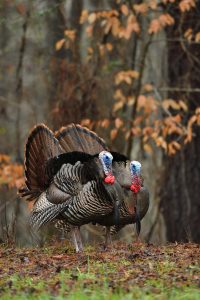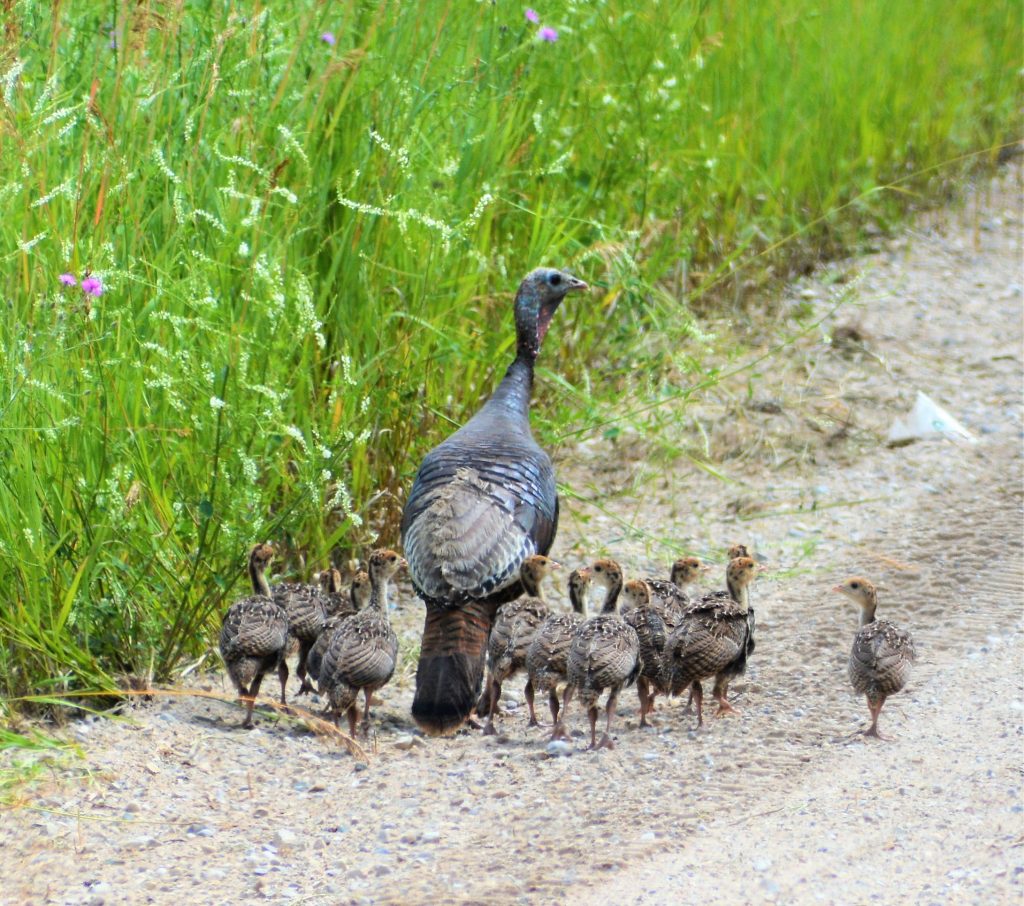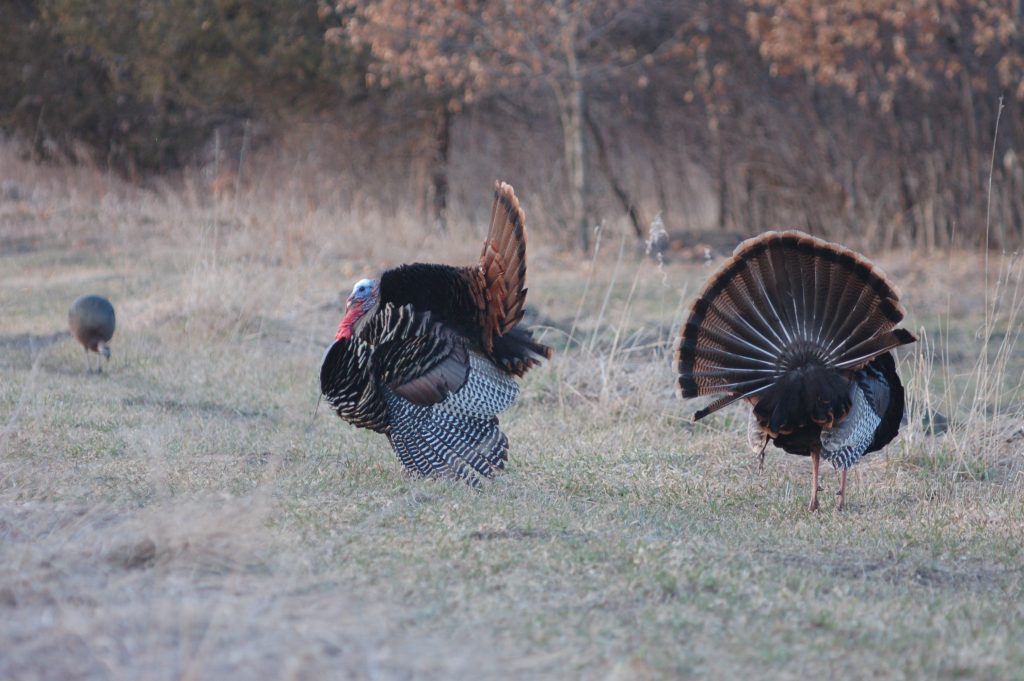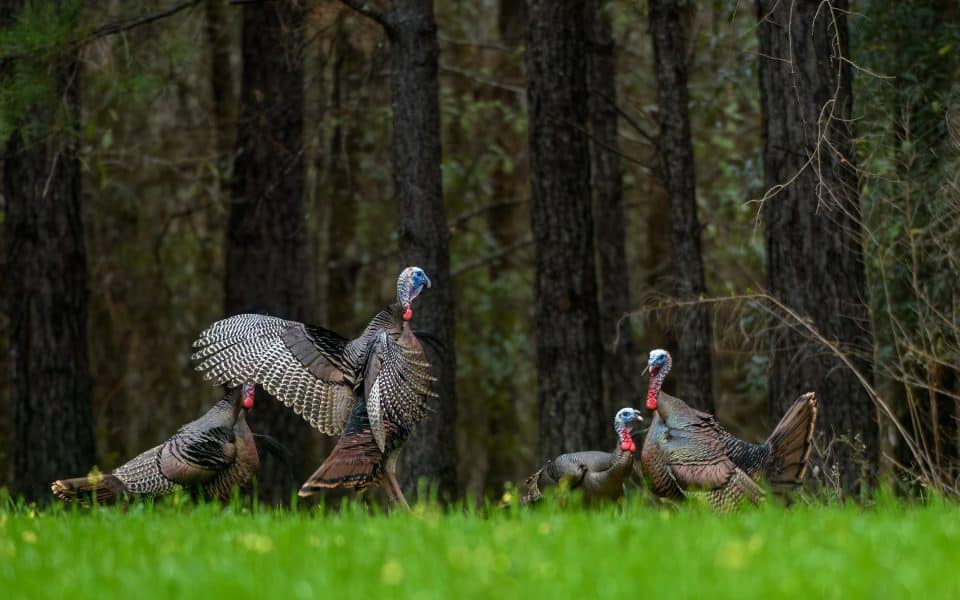Determining the number of birds to take off your land isn’t as easy as it seems.
One of the truths of turkey hunting is there will be good times, and there will be bad times. Anyone who hasn’t experienced the bad times – years when you can’t even buy a bird at the supermarket – probably hasn’t chased wily old longbeards for very long. On the other hand, sometimes Lady Luck blesses you with a hot hand and you can do no wrong. It’s during these fast-paced springs when a conservation-minded turkey hunter might begin to wonder, how many gobblers should I take from my property?
While this straightforward question is one of the foundations of wildlife management, when it comes to turkeys, the answer can be anything but clear. This article looks at why this question is so tough and offers insight for concerned gamekeepers to ponder during springs when gobblers are abundant and cooperative.

Tes Jolly
How Gobblers are Typically Taken?
Before we dive much further into how many birds should be taken, let’s first look at how many are typically taken. The answer might come as a surprise. In my state, the Mississippi Department of Wildlife, Fisheries, and Parks (MDWFP) keeps several datasets which help track turkey populations, including harvests. Since 1980, the agency has estimated turkey harvest by licensed hunters, and while this figure is by no means perfect, it provides a reasonable place to begin to establish harvest expectations. Over the past decade, in the portions of Mississippi occupied by wild turkeys, the estimated harvest has averaged about one gobbler per 1,200 acres. Areas with better turkey habitat produce more birds, and average about one gobbler per 600 to 800 acres. These numbers may seem low, and probably do not translate well outside the Southeast, but they are surprisingly similar to harvest figures found across most heavily forested states in the Deep South.
On properties in which turkey hunting is a primary focus, higher harvests are often tallied, either because of more hunting pressure, increased management intensity, or a combination of both. As part of it’s annual Spring Gobbler Hunter Survey, MDWFP keeps records of turkey observations and harvests from hunting clubs throughout Mississippi. Over the past 30 years, the average club participating in the survey has taken about one gobbler per 550 acres, very similar to the above statewide estimate of harvest in better-than-average turkey habitats. Some clubs, however, go even further. Hunting clubs at the 75th percentile, i.e., those taking more turkeys than 75% of all clubs in the survey, take about 1 gobbler per 275 acres.
Those in the top 10% may remarkably harvest three to five gobblers per square mile. While these figures provide interesting baselines, they are wide ranging, and more importantly don’t necessarily help to make informed decisions about what might be a sustainable harvest for turkeys on your property.
General Rules of Thumb
Wild turkeys are one of the more studied game species in North America, but surprisingly little research has been directed at understanding how varying rates of harvest impact the numbers in years to come. This omission is because turkey population trends are driven by hens, nests, and poults. Male survival and carryover from year to year may certainly have some effect on numbers, but its greatly overshadowed by the massive contribution from each summer’s hatch. Nonetheless, harvest strategy can play a role in hunting quality.

akslocum
Recent work in Georgia suggested harvest rates near one bird per square mile are enough to begin reducing gobbling activity. Studies conducted during the 1980s in Missouri suggested overall male harvest rates above 30% (in other words, annually killing more than 3 in 10 males) could shrink the population’s age structure, cause jakes to outnumber adult toms in some years, which in turn could decrease certain aspects of the hunt which make hunters happy (like having a higher proportion of adult toms in the flock).
While only a few states, including my own, out rightly prohibit jake harvest, conventional wisdom, and studies from across the bird’s range show the vast bulk of turkey harvest is comprised of adult gobblers. Jakes are therefore next year’s buffer against this year’s harvest, meaning local jake numbers should set a reasonable guide for how many adult toms can be taken from an area.
The problem is jakes are oftentimes skittish, so just because they aren’t being seen doesn’t mean they’re not present. Long-term observational data from hunters suggests the population in Mississippi is nearly always skewed slightly towards adult toms; jakes usually make up somewhere between 35 to 55% of all male birds observed. Natural death rates mean 10 to 20% will likely be lost between spring seasons. Rolling those figures together suggests a conservative rule of thumb would be about a third of adult gobblers in a local area could be harvested without worry, because even in lean years there will be enough jakes transitioning into adult toms to replace the losses next spring. In better years, when local reproduction has been strong and jake numbers are solid, the sustainable number probably edges to an even higher proportion of adult toms.
While these harvest figures are somewhat defensible, they certainly are not clean cut and can be difficult to practically implement. Ultimately, it is nearly impossible to say with certainty how many you can or should take off a given acreage each year because the number of turkeys you can sustainably shoot is a direct result of the number of turkeys reliably produced, and consistently held on the acreage you hunt. Regarding these last two points, wild turkeys are notoriously difficult to pin down.

Todd Amenrud
Why is Gobbler Harvest a Hard Question?
One of the primary problems with determining how many gobblers you can sustainably harvest off a given acreage is that turkeys aren’t white-tailed deer. That statement might sound ridiculous, but it’s true. Populations of the two species behave in very different ways, and so those familiar with managing deer harvest face a conundrum when trying to apply deer harvest principles to turkey harvest management.
The nearer a white-tailed deer herd gets to carrying capacity, the slower it changes from year to year. This is because the number of births becomes loosely synchronized with the number of deaths. From a harvest standpoint, this means deer harvest recommendations can be reasonably formulated for a property given its region and carrying capacity, and while these recommendations may be tweaked over time, biologists and managers who are familiar with the area’s productivity usually have a general expectation of how different harvest totals will affect the future herd.
This predictability is absolutely out the window when dealing with wild turkeys. Turkey populations swing widely, commonly exhibiting significant annual changes in number because of environmental phenomenon which might be completely out of a manager’s control. If the land you hunt has ever been on the losing end of one of those swings it can be utterly depressing, but the take home is those ups and downs are an unfortunate, but an inherent reality of turkey population biology. It is this characteristic which makes formulating harvest recommendations at the property level so challenging. The number of birds on your property may radically change for better or worse next year and it’s difficult to predict this change in advance.
Predictions might be a bit more reliable if there was a good way to be exactly sure how many turkeys are on your land, but this too is much more difficult than it seems. One of the primary reasons for this, as the author Tom Kelly put it, is that “turkeys aren’t pine trees.” They don’t stay put and are known to travel surprising distances. It’s not uncommon at all for gobblers to move several miles between winter and spring ranges. Which means the guestimates you may have thought you had in deer season might not even be in the right ballpark by the first of April.

Todd Amenrud
Take Home Points
In the end, there probably is no magically sustainable number of gobblers you can take off your property year after year. The number which may make sense one year may be completely off base the next, so a watchful eye is the key to understanding what’s right for your property at any given moment. Take what you feel is appropriate and err on the conservative side if you have doubts.
Further, keep in mind that unless you are blessed with an extremely large landholding, the number of turkeys on your property is constantly in flux and will be influenced by things far down the road. Turkey populations are determined at large scales; it’s the amount of quality habitat within the landscape extending miles and miles beyond your borders which determines the overall number of birds potentially available to your acreage. Most likely your property is just one piece of that larger puzzle. The best thing you can do is to try and make your dirt the most attractive part of the larger landscape with the hopes every gobbler around will want to visit at some point. Over the long run, this will yield far more birds in the bag than trying to second guess harvest management.
Adam B. Butler is a Certified Wildlife Biologist who serves as the Wild Turkey Program Coordinator for the Mississippi Department of Wildlife, Fisheries, and Parks. Adam can be reached at Adam.Butler@wfp.ms.gov









